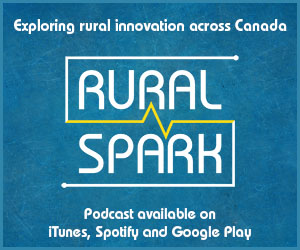CANSO – Very little has changed at the Canso Islands National Historic site in the past 25 years, and an interview with Matthew Cook, acting national historic site manager at Parks Canada Cape Breton Field Unit, indicates that is unlikely to change, unless local stakeholders come forward to invest in the future of the site.
Last July, Parks released a management statement for the Canso Islands which stated the organization would, “continue to manage Canso Islands and Grassy Island Fort national historic sites to grow relationships and pursue partnerships that offer opportunities for discovery of the sites and building an appreciation and understanding for their stories … By working together with key stakeholders, including the Canso Historical Society, Canso Area Development Association and the Municipality of the District of Guysborough, Parks Canada maximizes opportunities to present the stories of the sites and provide enhanced services.”
Visitor centre
In an early January interview, The Journal asked Cook about current operations, the absence of some key features at the Visitor Information Centre and on the Grassy Island Fort site.
One of the most noticeable absences at the historic site this past season was the interpretative video that is housed in a small alcove in the visitors centre, where the dioramas and display cases have not noticeably changed in decades.
Of the video, which provides an overview of the history and importance of the Canso Islands, Cook said, “The equipment that used to play the interpretation video in the visitor centre has become outdated, so a touch screen version of the video was intended to be installed in the 2020 visitor season. That required some work and some planning … by the time we open in 2022, that touch screen that plays the video will be up in running at the visitor centre.”
When asked why the video was not available during the 2021 season, Cook explained, “In 2021, there was a lot of work that was being done. It was sort of more time sensitive in terms of the weather, such as painting of the building, replacing the roof on the shelter on the island, and so the interior modifications for the video screen didn’t get done but it will be done before the 2022 season.”
When pressed on the point as to why the video couldn’t be repaired throughout the winter of 2020-2021, before the 2021 visitor season, Cook responded via email Jan. 11 stating, “The video wasn’t installed over the winter due to an inability to travel to the site. With COVID-19 concerns, staff travel between locations was strongly discouraged.”
Grassy Island
Visitors to Grassy Island last season (2021) had very little to see except for the view. The sites were overgrown and the interpretative panels, which had been removed for repair prior to the pandemic, were not replaced.
When asked to explain the condition of the site, Cook said, “The island site wasn’t open in 2020 so the maintenance on the island wasn’t able to be carried out because of the pandemic. However, in 2021, the maintenance was returned to pre-pandemic standards.
“The panels on the site were in need of replacement so they were removed. New panels were created and, unfortunately, we didn’t get to install them in 2020 because the site was closed. They will be installed ahead of the 2022 visitor season. By the time we open in 2022 those new panels will be on the island for the self-guided interpretation,” said Cook.
Administration and maintenance
Over the years, questions have been raised as to the efficacy and reason for administrating the Canso Islands from the Parks Canada Cape Breton Field Unit, which is responsible for national historic sites such as the St. Peters Canal, Alexander Graham Bell Museum in Baddeck and Fortress of Louisbourg.
Cook explained, “Part of the reason it belongs under the Cape Breton Field Unit is its connection to the story of Louisbourg, which is also managed by the Cape Breton Field Unit… It’s connected to the history of Louisbourg and that’s part of Cape Breton so, geographically and historically, it made more sense to align Canso with Cape Breton. But these internal management considerations shouldn’t make any noticeable difference to visitors’ experience of the site.”
Speaking to maintenance of the site as managed from the Cape Breton Field Unit, Cook said, “The maintenance of the site is contracted to the Canso Historical Society and the crews who look after it are actually locals of the Canso area. So, these tasks would include maintenance of the grounds, winterization of the site, boat operation, janitorial, and all of the general maintenance. Major repairs might be done by Parks Canada itself or might be contracted to a local company in the Canso area.”
Budget
As little has changed over the years at the Canso Islands site, The Journal asked for budget details spanning the past two decades. Cook said the operating budget had increased steadily over the past two decades; $47,900 in the 2000-2001 fiscal year, increasing over the next 10 years to $61,900 in 2010, with the most recent budget, for 2021-2022, coming in at just over $74,000.
“The 2020 season was significantly less but we only spent about $48,000 because it was an anomaly because the site was closed due to COVID. But the budget takes into consideration increase in cost of services and maintenance and these increase incrementally year after year,” said Cook.
Consulting several inflation calculators, The Journal found that the increase in budget over this 20-year time frame only matches the rate of inflation, give or take a few thousand dollars, with no additional funding for development or enhancement of the site.
Future development
The Journal asked Cook if Parks Canada would look at further development, other than maintaining the status quo, at the Canso Islands site, to which he replied, “We’re definitely open to organizations that could help us do that. We’re always open to new and improved ways to tell the story at any of our sites including Canso. I’d welcome the opportunity to talk to any organization that wanted to help us increase visitation… We are open to partnerships and collaborations, if we’re approached, and we look forward to the prospect of exploring those.”








